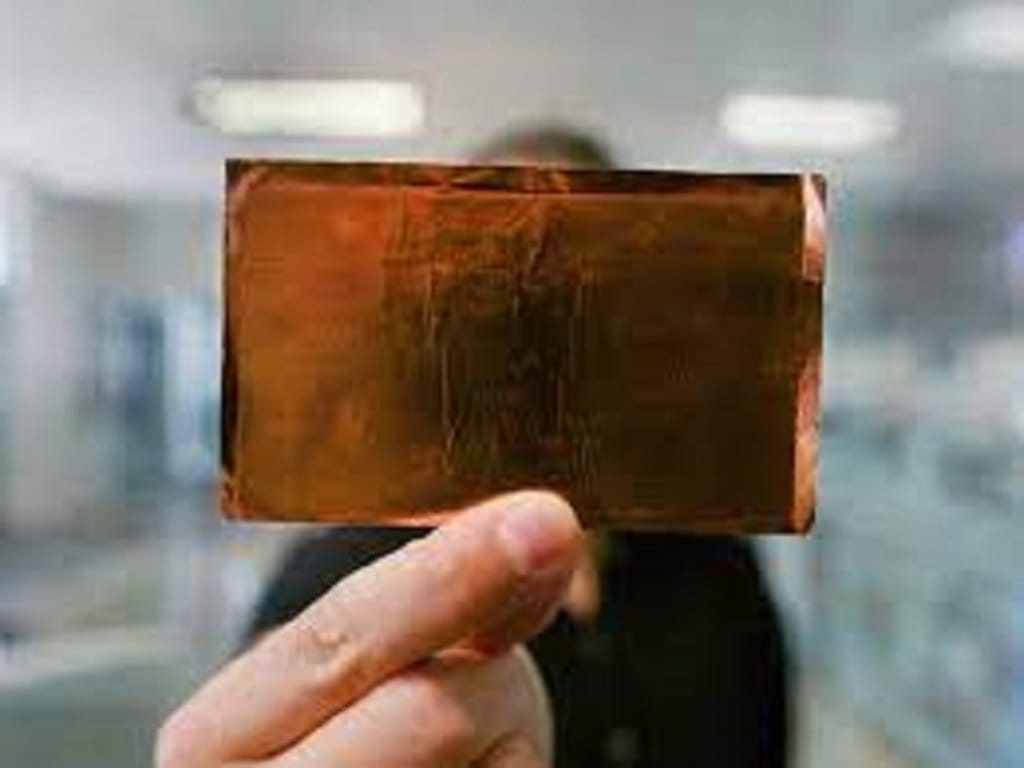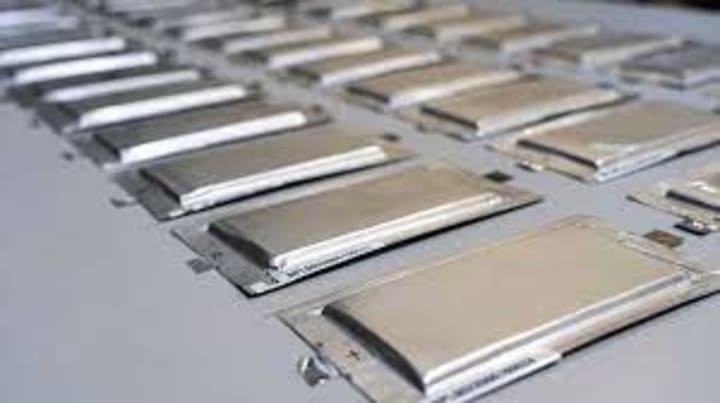SOLID-STATE BATTERIES 3D PRINTED
THE NEXT BIG THING

SOLID-STATE BATTERIES 3D PRINTED? FUTURE
The race to create a solid-state battery that should compete with today’s lithium-ion cells is heating up. This should be the future of rechargeable batteries. It guarantees greater power, higher safety, quicker charging, and a longer lifespan. And, in theory, ought to be any form you prefer it to be. Private organizations and lookup labs are racing to crack the code for a battery that ought to sooner or later exchange these, the ever-present lithium ion. And one organization is taking it a step similarly and desires to trade our idea of what a battery can even seem to be like by 3D printing them. Let's take a step lower back and give an explanation for what a battery is. A usual battery works by changing chemical power into electricity. We want a fine end, or cathode. In this case, a zinc-coated nail. And a poor end, or anode, which ought to be a copper penny. We additionally want something to join these two known as the electrolyte. That's the place a potato comes in. you can put one on each end. Each give up reacts chemically with the potato and the anode genuinely releases electrons which tour alongside this wire again to the cathode. This glide of electrons is certainly what's changing that chemical response into electricity. One potato will probably now not do anything. But if we add a few greater potatoes, we'll likely get this mild to work. Hey, that used to be fairly good. So it truly is the basis of any chemical battery.
Lithium ion batteries are some of the most profitable variations of this. But there may be room for enhancement and startups are adjusting two key factors of the design, the electrolyte and the anode.
- Most batteries today, highly a good deal, each battery you will buy, has a liquid electrolyte in it.
- We clearly name them lithium ion batteries due to the fact the electrolyte is full of lithium ions transferring the cost around. Liquid electrolytes are terrific conductors. But they're volatile, especially when broken or at excessive temperatures. And if you watch the news, you've possibly viewed reviews on incidents like this.
- [Announcer] Her telephone caught fire.
- [News Anchor] Model S Plaid burst into flames before this week.
- May have sparked a furnace at a neighborhood recycling plant is something that is plaguing these facilities throughout the country.
- We get it. There's a protection issue. One answer is to use a greater stable, non-flammable stable fabric instead. Right now, a lot of corporations constructing these solid-state batteries are experimenting with electrolytes made from all varieties of materials like ceramics, glasses, and polymers. The different massive improve is discovering a extra effective material to use for your anode. Your ordinary historic lithium ion batteries use graphite which already works notably well. But there is an extra effective candidate out there.
- The holy grail for battery anodes has been lithium metal. And it is now not misplaced on people.- So lithium metallic has a greater capability than different anodes like silicon or graphite, however it is difficult to work with. It tends to shape these little microscopic constructions known as dendrites that can brief the battery.
That's been a huge trouble for liquid electrolytes. But the usage of a stable cloth should enhance things.
- The way I assume about dendrites is like the roots of a tree system. So the roots are growing. You wanna quit the roots from, you know, kind of coming into your house. So what do you do? You put a concrete wall or something without a doubt hard, so automatically stopping.- So a desirable strong electrolyte can stand up to these little dendrites and nonetheless permit for the convenient glide of ions again and forth. Over the previous few years, there has been a lot of enhancement in these new materials.
Today, main startups are searching to get their pilot batteries out of the lab and into a factory. And one California-based company, Sakuu, is taking an even larger swing. They're designing solid-state batteries with lithium metallic anodes, and they prefer to 3D print them.
- The only way to go into this route of having extra sustainable, safer, most advantageous batteries is to, at some factor in time, assign the manufacturing process.
- So most batteries these days are made with a manner known as roll-to-roll manufacturing. The substances are rolled out in lengthy sheets and then reduced down for personal battery layers. 3D printing, on the other hand, may want to let Sakuu cram extra layers into the identical quantity of space, enhancing the basic capability of the battery.
- So it is not like these days where you have them in a pouch and the battery is simply inside, the layers are inside, it has to be sealed. But in the printer with a Sakuu Kavian platform, our printer platform, we can create these batteries.- It's how Sakuu hopes to outcompete different solid-state startups and lithium ion makers who are sticking with roll-to-roll.
- So it virtually takes the aggregate of the suitable battery sketch and the optimum manufacturing technology. Staying with roll-to-roll for certain would now not allow us to even have greater strength densities than all people else.
- Okay, a huge caveat to all of this. Sakuu has 3D printed solid-state batteries in their lab, however has now not but completely printed a battery using their prototype. In fact, we could not even move the 3D printer prototype itself. Sakuu says it truly is due to the fact there's simply too much proprietary stuff going on that they're now not prepared to disclose to the public yet. They surely have this prototype built, they're doing tests, and they're making an attempt to figure out how to make a nice battery using this manufacturing process. What we're about to exhibit you is really the 3D printed mannequin of that 3D printer. Meta, I know
-This platform can use several, too. So it can print metals, it can print ceramics, and it can print polymers. And it is printing these layers via layer and it really is the key factor to make it faster.
- One will ask how fast? Well, we're no longer precisely certain yet. Sakuu hopes that one day every computing device would be capable of producing forty megawatt hours of power storage annually. In regular terms, it really is about the same as five hundred electric powered automobile batteries per year. But this prototype works in a different way than your traditional 3D printer. Usually a printer deposits a layer of material, waits for it to solidify, and then provides the subsequent layer. Here, every layer is printed and is best managed simultaneously. Excess cloth can be recycled inside the system. The layers are stacked tightly collectively at the very stop and out pops a battery. But the most shocking perk of this procedure is not energy or security or cost. It's genuinely about shape factor. Look at these batteries. They're basically rectangular or cylindrical. That's due to the fact it is challenging when the usage of roll-to-roll to make one-of-a-kind shapes. It would require new tools, greater waste, and likely a greater fee tag. 3D printing ought to be a good deal greater flexible.- Look at this in the future, you will see batteries which certainly emerge as a part, a critical section of a product. For example, if you seem to be at AR/VR glasses, the temple arm of the glasses ought to be a printed battery. Or you appear at a mobile cellphone the place perhaps the case of the cell phone cellphone is surely a battery.
- So the battery isn't always simply extra effective itself. It can additionally fill in lifeless space, maximizing its footprint in a product, and boosting energy that way too. You would not have to always diagram a product around a battery. You may want to diagram the battery round your product.
- Total reinvention is of course risky. The corporation claims that their system may want to limit manufacturing costs, however they would not share the genuine charge tag of the printer with us. On pinnacle of that, you are introducing a new manufacturing technique to an installed industry, and that is usually gonna be a challenge. And they're no longer the only ones taking this approach. Other businesses like Blackstone Resources and Photocentric are additionally working on 3D printed batteries. While all this R&D has been happening, lithium ion batteries are simply getting more cost-effective and greater powerful.That's certainly hard to compete with. Sakuu is presently constructing its first manufacturing unit and hopes to get pattern batteries out to their clients in 2023.
- So this facility will solely host our very own battery manufacturing, which is, of course, wished to show the manner to exhibit all people that our technological know-how works successfully.- While startups like Sakuu are inserting their first technology merchandise to the test, the want for extra superior batteries is solely growing.

The intention is not simply to get a higher battery into your phone, it is growing vary for electric powered motors and giant scale storage for a decarbonized power grid. But to take on the world of lithium ion, novices cannot simply be a little better.
- What we have to do to get this fabric to be business is we've got to make them perfect. Because if it is not perfect, they've emerged as a sizable undertaking when it comes to attempting to make this into a battery that'll stand the check of time and strength all the matters we desire to power.





Comments
There are no comments for this story
Be the first to respond and start the conversation.